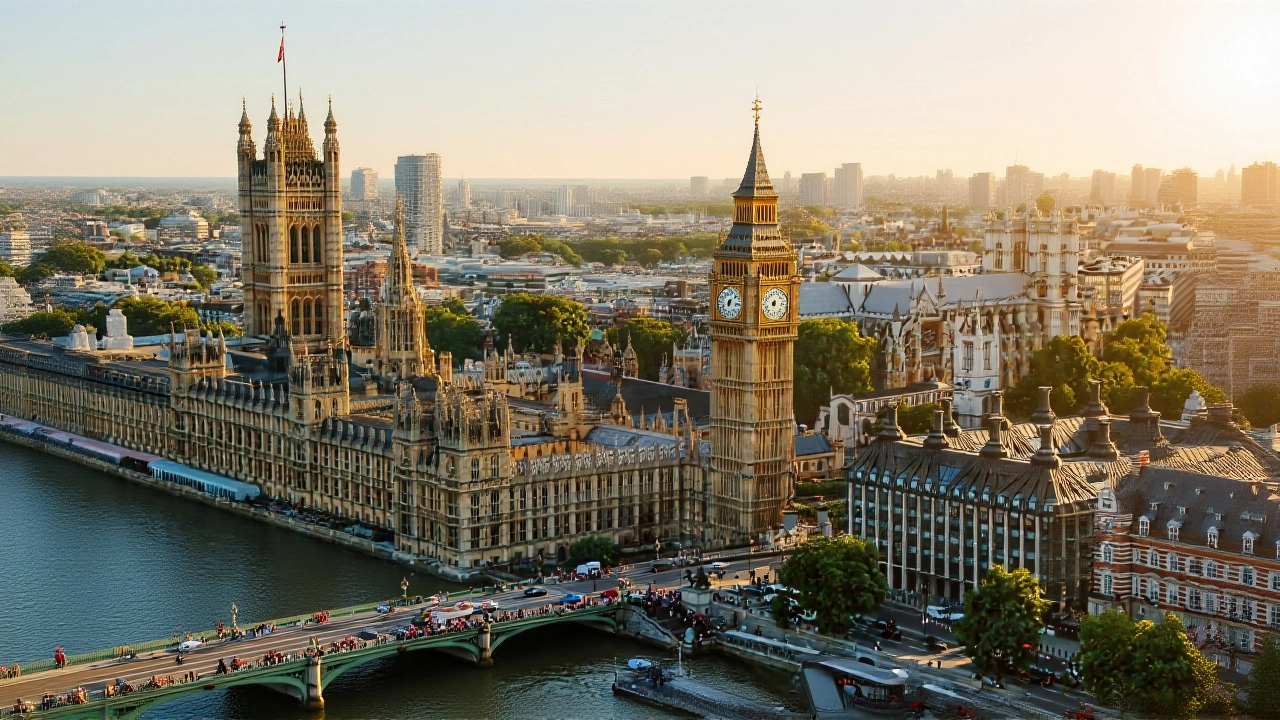Starting April 2, 2025, every European national traveling to the UK for tourism, business, or short-term study will need a digital pass — not a visa, but something just as critical: an Electronic Travel Authorisation (ETA). The final phase of the UK’s long-planned digital border overhaul is now in motion, with the system fully operational for all non-visa nationals. What began as a pilot for Gulf travelers in late 2023 has become a nationwide requirement, and the clock is ticking for millions of EU citizens who’ve long taken seamless entry for granted.
How the ETA Rollout Unfolded — A Timeline
The UK Home Office didn’t drop this on the public overnight. It was a carefully staged rollout, designed to test systems and manage public reaction. UK Home Office kicked things off on October 25, 2023, with Qatari nationals. Then came the Gulf states — Bahrain, Jordan, Kuwait, Oman, Saudi Arabia, and the UAE — on February 1, 2024. By November 27, 2024, every other non-European non-visa national (including Americans, Canadians, Australians, and Japanese) had to comply. Now, on March 5, 2025, the last group — Europeans — received their deadline: apply by April 2, 2025, or risk being turned away at the gate.What You Need to Apply — and How Much It Costs
Applying is supposed to be simple: download the UK ETA app from Apple or Google, or use the GOV.UK website if you don’t have a smartphone. You’ll need your passport, a recent digital photo (no selfies, no hats, no shadows), your email, and answers to basic suitability questions — think criminal history, health conditions, past visa refusals. The fee? Officially £16, according to the UK Home Office’s November 2025 factsheet. But here’s the twist: some university travel offices, like Cornell University Travel Office, list it as £10. That discrepancy hasn’t been clarified. Either way, it’s a one-time payment for a two-year authorization — or until your passport expires, whichever comes first. Most applications are approved within minutes via the app. But the Home Office warns: apply at least three working days ahead. Delays happen — especially if your name matches someone flagged in immigration databases, or if your photo doesn’t meet the strict guidelines. One applicant in Manchester reported a 48-hour wait after uploading a photo with a faint shadow under their chin. "It’s not complicated," said a Home Office spokesperson, "but it’s precise. We’re not asking for your life story — just proof you’re not a risk."Who’s Exempt — and Who Needs to Be Extra Careful
British and Irish citizens are out. So are dual nationals who hold either passport. But here’s the trap: if you’re a dual British citizen and you show up with only your French or German passport? You’re in trouble. Starting February 25, 2026, you won’t be allowed through UK passport control unless you produce a valid British passport or a Certificate of Entitlement. That’s not a suggestion — it’s a hard rule. The UK Home Office is clear: "Dual British citizens without a British passport will undergo additional identity checks. They will not proceed until their nationality is verified." Official government travelers — including U.S. military personnel and diplomats — are exempt. So are those transiting airside, meaning they never clear UK immigration. But that exemption? "Under review," says the September 2025 factsheet. Don’t count on it lasting.
Why This Matters — And What It Signals
This isn’t just about paperwork. It’s about control. The UK is building a digital border system — one that doesn’t rely on stamps or visas, but on data, algorithms, and pre-screening. It’s modeled after the U.S. ESTA program, which has processed over 500 million authorizations since 2009. The U.S. Embassy in Germany called it "part of the UK’s move towards a digital border system." And they’re right. For travelers, it means less time at immigration — if you’re approved. For the government, it means better tracking, faster identification of potential threats, and fewer overstays. Since 2020, the UK has seen a 27% increase in visa overstays from non-visa countries. The ETA is meant to cut that.What Happens If You Don’t Apply?
Starting February 25, 2026, airlines, ferries, and Eurostar will be required to check for an ETA before boarding. No ETA? No flight. No ferry. No train. Period. No exceptions. The system is automated. Airlines are being fined £2,000 per passenger they bring in without authorization. One British Airways employee in Heathrow told me, "We’ve had to turn away 17 people in the last week — all from France, all unaware. They’re shocked. We feel bad, but we’re just following the rules."
What’s Next?
The Home Office says it’s monitoring for fraud and system abuse. They’ve already seen attempts to use stolen passport numbers and fake photos. A new AI tool, reportedly called "ClearTrack," is being rolled out to flag suspicious applications. By 2026, they plan to integrate ETA data with the UK’s biometric entry system — meaning your face might be scanned at the gate, not just your passport. For now, if you’re planning a trip to London, Edinburgh, or even a quick stop in Belfast before heading to Ireland — check your passport. Apply early. Don’t wait until the last minute. And if you’re a dual citizen? Bring your British passport. No compromises.Frequently Asked Questions
Do I need an ETA if I’m just transiting through the UK?
Only if you pass through UK border control. If you’re staying airside — say, changing planes at Heathrow without leaving the secure area — you’re currently exempt. But that temporary loophole may close by late 2026. The Home Office says it’s "under review," and with increased surveillance at major hubs, don’t assume it’ll last.
Can I apply for an ETA if I’m already in the UK?
No. The ETA is only for those planning to enter the UK. If you’re already here on a visa, visitor status, or as a resident, you don’t need it. But if you leave and plan to return, you’ll need one — unless you’re a British or Irish citizen. The system is designed for pre-travel clearance, not in-country adjustments.
What if my ETA application is rejected?
You’ll be told the reason — usually a mismatch in data, a past refusal, or a flagged security concern. You can reapply, but you must address the issue. Reapplying with the same information won’t work. Some applicants have had success after providing additional documents, like proof of employment or ties to their home country. The system doesn’t allow appeals, but it does allow corrections.
Does the ETA allow me to work or study long-term in the UK?
No. The ETA is strictly for short stays — up to six months — for tourism, business meetings, or short courses. It does not permit employment, extended study, or settlement. Those who want to work or study longer must apply for the appropriate visa. The Home Office has warned that attempting to use an ETA to bypass visa rules could lead to future entry bans.
Is the £16 fee the same for children and seniors?
Yes. Unlike visas, which often have reduced fees for minors or elderly applicants, the ETA charges £16 for everyone — from infants to octogenarians. There are no discounts. The Home Office says this simplifies processing and prevents fraud. Parents applying for children under 18 must provide their own details and link the child’s ETA to their passport.
Will the ETA system eventually replace passports entirely?
Not anytime soon. Passports remain the primary travel document. But the ETA is the first step toward a biometric-only future. The UK is testing facial recognition at select airports, and by 2027, officials aim to link ETA data directly to biometric profiles. Eventually, you might just walk through a gate with your face — no passport needed. But for now, you still need both.
